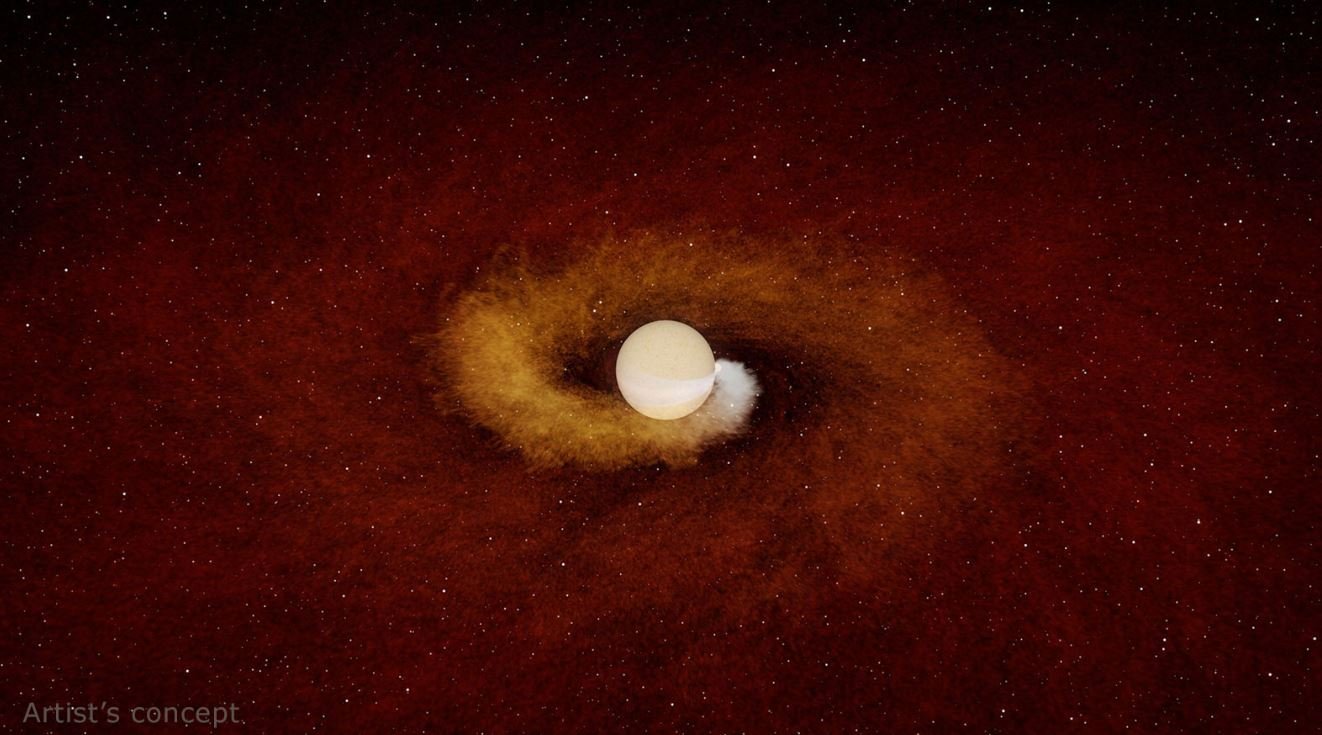A recent study by scientists at universities at MIT, Harvard, Caltech and other institutionspresents data from the observation of a star swallowing a planet; The name of the event was ZTF SLRN-2020. It is a star located about 12 thousand light-years from Earth in the constellation Aquila.
In just ten days, the star became 100 times brighter than it normally would before disappearing completely. In the article, the scientists explain that, most likely the light is the result of an explosion caused by the engulfment of a planet close to the star. Researchers are observing the phenomenon for the first time.
The event was discovered in May 2020, but scientists spent more than a year studying the observation to discover the reason behind the explosion. The first observation of the phenomenon was made with the help of the Zwicky Transient Facility (ZTF) program, but was confirmed via the WM Keck Observatory in Hawaii – the planet was similar in size to Jupiter.
“We were able to see decades before and after. Before, when planets are still orbiting very close to their stars, and then, when a planet is swallowed up and the star becomes giant. What was missing was catching the star in action with a planet passing through that target in real time. That’s what makes this discovery really exciting,” said Kishalay De, lead author of the study and postdoctoral fellow at MIT’s Kavli Institute for Astrophysics and Space Studies.
A dying star light-years away
One of the observations that intrigued scientists the most was the strange molecules emitted by the event, which can only exist at extremely cold temperatures. In most cases, substances that are not in this observation, such as hydrogen and helium, are expelled.
A star dies when it burns all the fuel in its core and expands until it is a million times larger than its original size. As the star grew, it began to approach and swallow the neighboring planet. The process is similar to what will happen to the Sun in the next 5 billion years, when scientists predict the star will die and devour everything around it, such as the planets Mercury, Venus and perhaps even Earth.
Now the star has begun its red giant phase, which can last more than 100,000 years. The observation is part of the NEOWISE mission, a NASA project that uses the Wide Field Infrared Survey Explorer (WISE) space telescope to search for asteroids – the data is captured using infrared light technology.
Source: Tec Mundo
I’m Blaine Morgan, an experienced journalist and writer with over 8 years of experience in the tech industry. My expertise lies in writing about technology news and trends, covering everything from cutting-edge gadgets to emerging software developments. I’ve written for several leading publications including Gadget Onus where I am an author.











